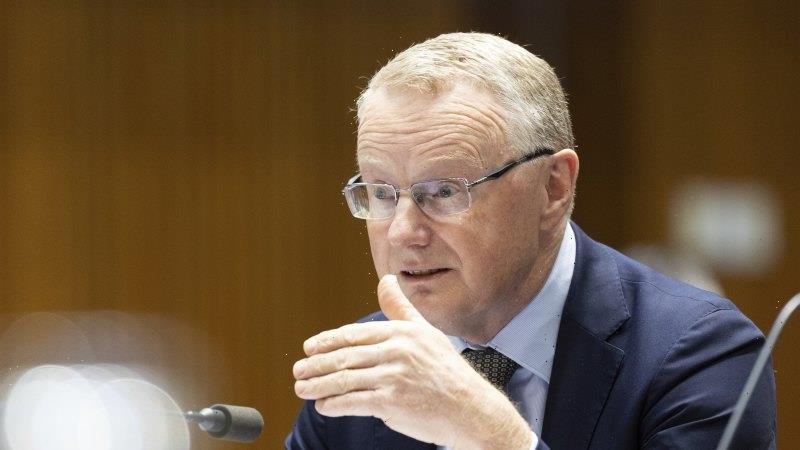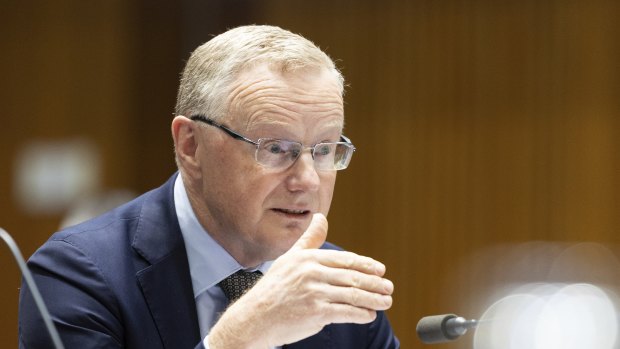
Slow-hand Lowe taps the brakes on the interest rate hikes
10/04/2022In the 690 words used by Reserve Bank governor Philip Lowe to explain the institution’s decision to increase official interest rates by a quarter percentage point, only one is important.
The word – substantially – signals the bank, after lifting interest rates at their fastest rate since the Spice Girls formed in 1994, is starting to become a little wary about how the country deals with the combined impact of inflated mortgage repayments and global economic turmoil.
RBA governor Philip Lowe added one very important word to his usual statement explaining a smaller-than-expected interest rate increase.Credit:Alex Ellinghausen
The RBA hiked the cash rate half a percentage point at its past four meetings. Financial markets and most economists believed the trend would continue into October.
Lowe’s statement explaining its quarter percentage point hike on Tuesday was, to all intents and purposes, a copy of the statements he released following the August and September meetings. Except for that one word.
“The cash rate has been increased substantially in a short period of time,” he wrote.
“Reflecting this, the board decided to increase the cash rate by 25 basis points this month as it assesses the outlook for inflation and economic growth in Australia.”
In non-central bank talk, Lowe told borrowers (and savers) that the bank knows it’s whacked the country with a lot of interest rates, that there are more rate rises to come but it’s time to take the economy’s temperature.
The past four weeks have been a stormy one for the global economy, stretching from the Federal Reserve’s seeming intent to drive the United States into recession to the political and fiscal disaster that was the Truss government’s novel approach to budget management.
But these barely got a look-in with the Reserve.
Outside the word “substantially”, there were few differences between what Lowe was saying in September and what he said on Tuesday.
The bank’s job is to hold inflation between 2 and 3 per cent. But Lowe retained a line that had been both in his August and September statements – that inflation is expected to be “7.75 per cent over 2022, a little above 4 per cent over 2023 and around 3 per cent over 2024”.
So there’s no change in the inflation outlook to justify a slowdown in interest rate increases.
In September, Lowe noted that the outlook for global economic growth had “deteriorated”, rattling off some of the threats including higher interest rates in other countries, the war in Ukraine and the COVID pressures hitting China.
A month later, he again referenced the global outlook as a risk. But one of the largest shocks to the outlook, Britain’s unfunded energy subsidy and (now abandoned) tax cut for high-income earners, didn’t even rate a mention.
In both September and October, Lowe noted pressure on household budgets while also pointing out they were being supported by the tight jobs market and the financial buffers built up through the pandemic.
Lowe did depart from his September script to pour cold water on those worrying about a wage-price spiral, saying incomes here were not climbing at the rate seen overseas where inflation was higher.
While Australia and the United States both have an unemployment rate around 3.5 per cent, the land of the free has wages growth at 5.7 per cent. Here, wages’ growth is at a much more modest 2.6 per cent.
The RBA has increased rates 33 times since 1990. It’s lifted interest rates by more than a quarter percentage point on just 8 occasions, and 4 of those movements have occurred this year.
Slicing the size of those rate rises, and perhaps spacing them out over a longer period of time, is the Reserve’s effort to bring inflation to heel without precipitating an interest-rate induced Australian recession.
That’s what they want, what they really, really want.
Cut through the noise of federal politics with news, views and expert analysis from Jacqueline Maley. Subscribers can sign up to our weekly Inside Politics newsletter here.
Most Viewed in Politics
From our partners
Source: Read Full Article


